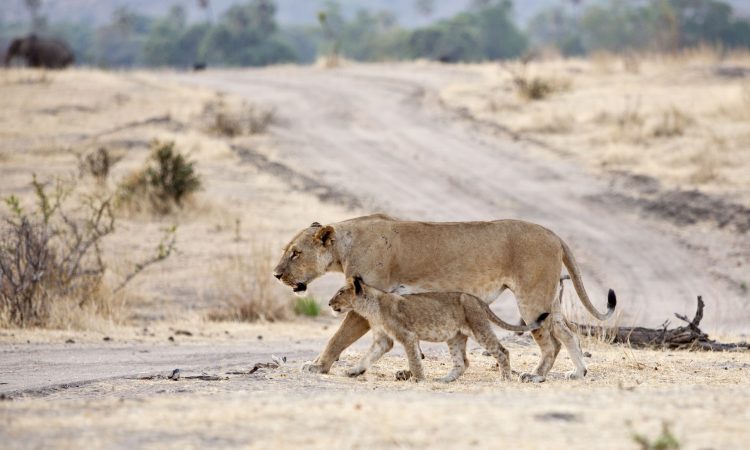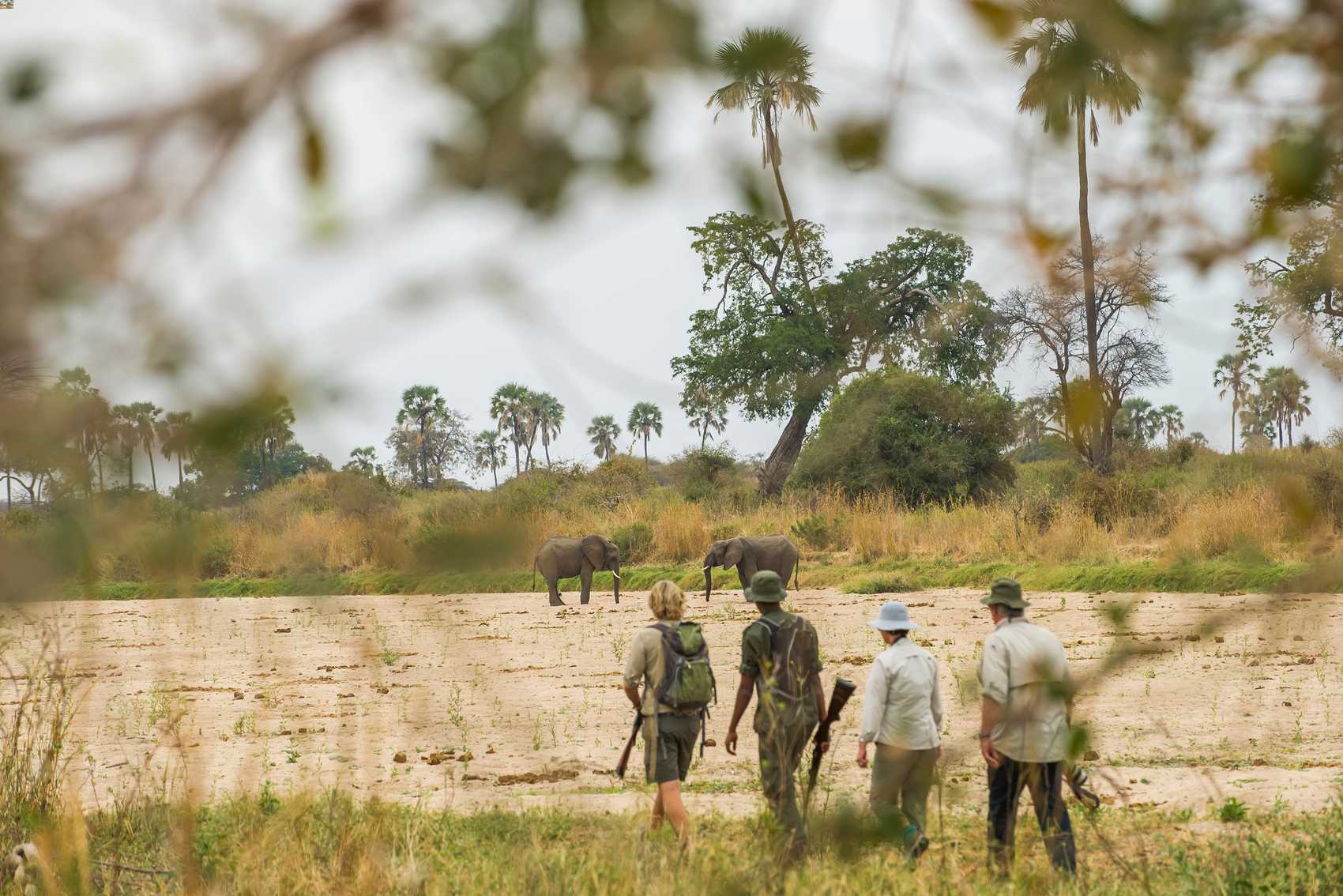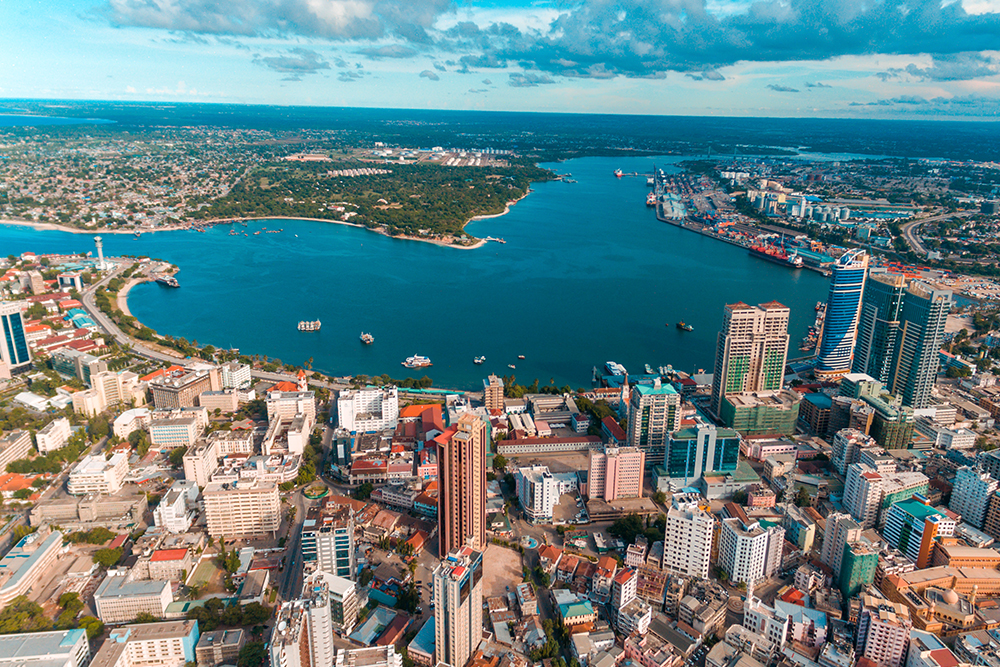Ruaha National Park Safari Guide : Many safari enthusiasts place Tanzania’s Serengeti National Park and Ngorongoro Conservation Area at the top of their travel wish lists. But Tanzania’s best-kept safari secret is Ruaha National Park, another pristine wilderness in the south-central region of the country. It is one of the largest national park in East Africa and it covers an area of more than 7,800 square miles. The Great Ruaha River, which flows along the park’s southeast boundary and serves as an essential water source for wildlife during the dry season, is also the source of the park’s name.

Its ecosystem include everything from open grasslands to baobab tree groves, rolling hills, and dense miombo and acacia woods. For devoted safari travelers who want to get away from the masses and experience untamed Africa, Ruaha is the ideal destination. These pristine surroundings are home to an astounding variety of species.
Tourist activities: Things to do in Ruaha National Park
The main reason people visit Ruaha National Park is to see the animals, and there are numerous ways to do that. The campgrounds and lodges in the park provide escorted game drives and night drives, providing you the advantage of a knowledgeable ranger who knows which spots to look for the finest sightings. During the day, you can also take a self-drive tour of the park. This is also a thrilling choice for explorers who like to travel alone.
Walking safaris are also well-liked in Ruaha, whether you decide to book one via Tanzanian Parks or through your lodge. A hot air balloon safari is another way to see the wildlife and scenery from above.

Back on land, go birdwatching, have a guided safari tour or take advantage of the lodge’s arranged bush dinners. You may also visit cultural and historical sites like the Nyanywa rock paintings, the natural pillars at Isimila, or the Mkwawa Museum.
Wildlife Viewing at Ruaha National Park
Ruaha national park is one of the best Tanzania safari park for animal viewing particularly well-known for its sightings of huge predators. A 2009 study by the Ruaha Carnivore Project revealed that the park is home to a stunning 10% of all the lions in Africa, including sizable prides of twenty or more animals. Additionally, this region is home to the third-largest population of endangered African wild dogs in the entire world as well as one of only four East African cheetah populations with more than 200 adults.
In addition, Ruaha is a great place to see leopards and spotted hyenas, while jackals and bat-eared foxes can also be seen there frequently. All these predators must eat, of course, and Ruaha has a wide selection of food for them to choose from. There are several different types of antelope, such as waterbuck, kudu, roan, and sable.
With approximately 10,000 of these majestic animals ranging freely over its enormous area, the park also features one of Tanzania’s largest herds of elephants. Hippos and Nile crocodiles are among the aquatic animals that thrive in the Great Ruaha River. The rhinoceros, which were poached to extinction in this area in the early 1980s, are the sole significant omission from the park’s list of animals.
You may get a close-up look at all of these wonderful species at a number of lodges and outfitters. A select handful will even transform your walking safari into an extraordinary “fly camping” adventure.
Birding at Ruaha national Park
Ruaha National Park is a must-visit destination for serious birders since it is home to over 570 different species, including a fascinating mix of birds from both Southern and East Africa. Watch for endemic species like the Tanzanian red-billed hornbill, the ashy starling, and the yellow-collared lovebird. Here, raptors abound, and vultures are particularly common. There are a total of six different vulture species in Ruaha, including the Rappel’s vulture, the white-headed vulture, the white-backed vulture, and the severely endangered hooded vulture.
The arrival of migrant species from Europe, Asia, and North Africa during the wet season makes for some of the best birding in Ruaha National Park. Numerous water birds, especially sizable flocks of white and Abdim’s storks, are drawn to the Usangu wetlands and the area around the Great Ruaha River as a result of the rising water levels. In central Tanzania, rare, smaller birds of prey are another summertime attraction. At this time of year, resident birds are wearing their breeding plumage while sooty falcons, Eleonora’s falcons, Amur falcons, and Eurasian hobby emerge, Ruaha National Park Safari Guide.
Accommodations: Where to Camp/ stay in Ruaha National Park?
While numerous private businesses offer glamping options in year-round and temporary camps, the park has five public campsites that provide tent space. A tent, food, and a fire are the only amenities provided in some packages, whereas tented main lodges and opulent camping suites are offered by more opulent outfitters.
Ikuka Permanent Tented Camp: The Mwagusi River Valley may be seen from this lodge’s location in the park’s northern region. Seven opulent, open-sided tents with thatched roofs, king or twin beds, dressing areas, walkways to bathrooms with rain showers, and sizable decks with seats are included in the Ikuka accommodations. This exquisite stay, which is a little less daring than some of the other camping alternatives, is completed by an on-site pool.
The Kigelia Camp: Six tents are situated in a bushy area at the uncomplicated Kigelia Camp, which is surrounded by Kigelia trees. There is locally made wood furniture, an en-suite bathroom, and an outdoor bucket shower in each tent. Delicious local cuisine and evening beverages are served in the dining tent. This place offers the best birdwatching anywhere, Ruaha National Park Safari Guide.
Kichaka Expedition Camp: There are three different types of accommodation available at Kichaka. The first consists of one of three roomy, open, and well-furnished tents that can accommodate up to eight people. The second choice takes you into the park’s more distant areas, where you’ll set up fly camps amidst the vegetation. For a really private experience, you can reserve the full property, complete with en-suite tents, or the fly camp, using the third option.
Tanzania Parks Public Camping: Public camping in Ruaha parks is mainly available in three campsite such as Tembo, Kiboko, and Simba campsites, as well as two special campgrounds, all offer public camping (Mbagi and Ifuguru). The more functional public campgrounds feature standard amenities including restrooms, showers, and a shared kitchen. The unique campsites, on the other hand, are undeveloped wild camping areas that require reservations in advance.
How to Get There: Getting to Ruaha National Park
The quickest way to reach Ruaha is by flying into one of the park’s two airstrips, one of which is in Jongomero and the other near the park’s administrative center in Msembe. Daily flights from Arusha, Dar es Salaam, Selous, the Serengeti, and Zanzibar are provided by Coastal Aviation.

Additionally, Auric Air and Safari Airlink offer flights to Ruaha from several locations in Tanzania. A guide from your lodge or camp will pick you up at the airport and take you to your accommodations in a four-wheel-drive vehicle. If you decide to travel to Ruaha, it is either a 10-hour drive from Dar es Salaam or a three-hour drive on a muddy road from Iringa (around 80 miles).
Safari advice and Tips for Your Visit to Ruaha national Park
- All visitors are required to pay a vehicle entry charge and a daily conservation fee, which is cheaper for East Africans and Tanzanians and a little expensive for foreigners. The daily conservation fee is $30 for adults and $10 for children.
- The weather in Ruaha National Park generally follows the same trends as the rest of Tanzania, with two seasons of rain and a dry season that lasts from June to October. The long rains stretch from March through May, whereas the brief rains occur in November and December.
- When the weather is sunny but not oppressively hot and the roads are clear, the dry season is the ideal time to visit Ruaha National Park. Additionally, this is the ideal moment to watch a game, Ruaha National Park Safari Guide.
- The park is lush and lovely after rain, and birding is at its peak. However, some of Ruaha’s outlying regions might not be reachable at this time.
- The roads in Ruaha are generally difficult, especially when it is raining. If you decide to go on a self-drive safari, you will need a four-wheel-drive vehicle and the driving skills to operate it safely.


